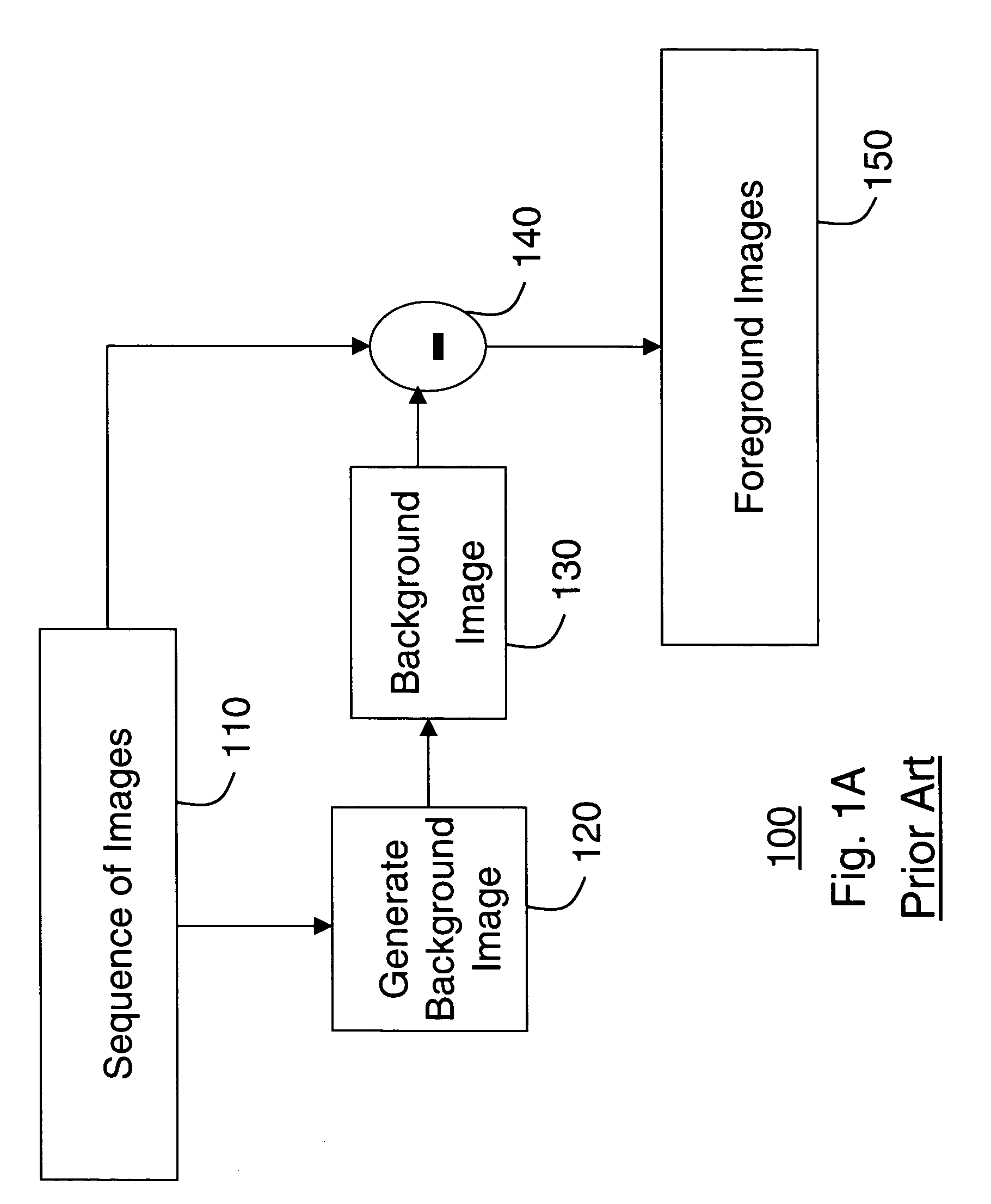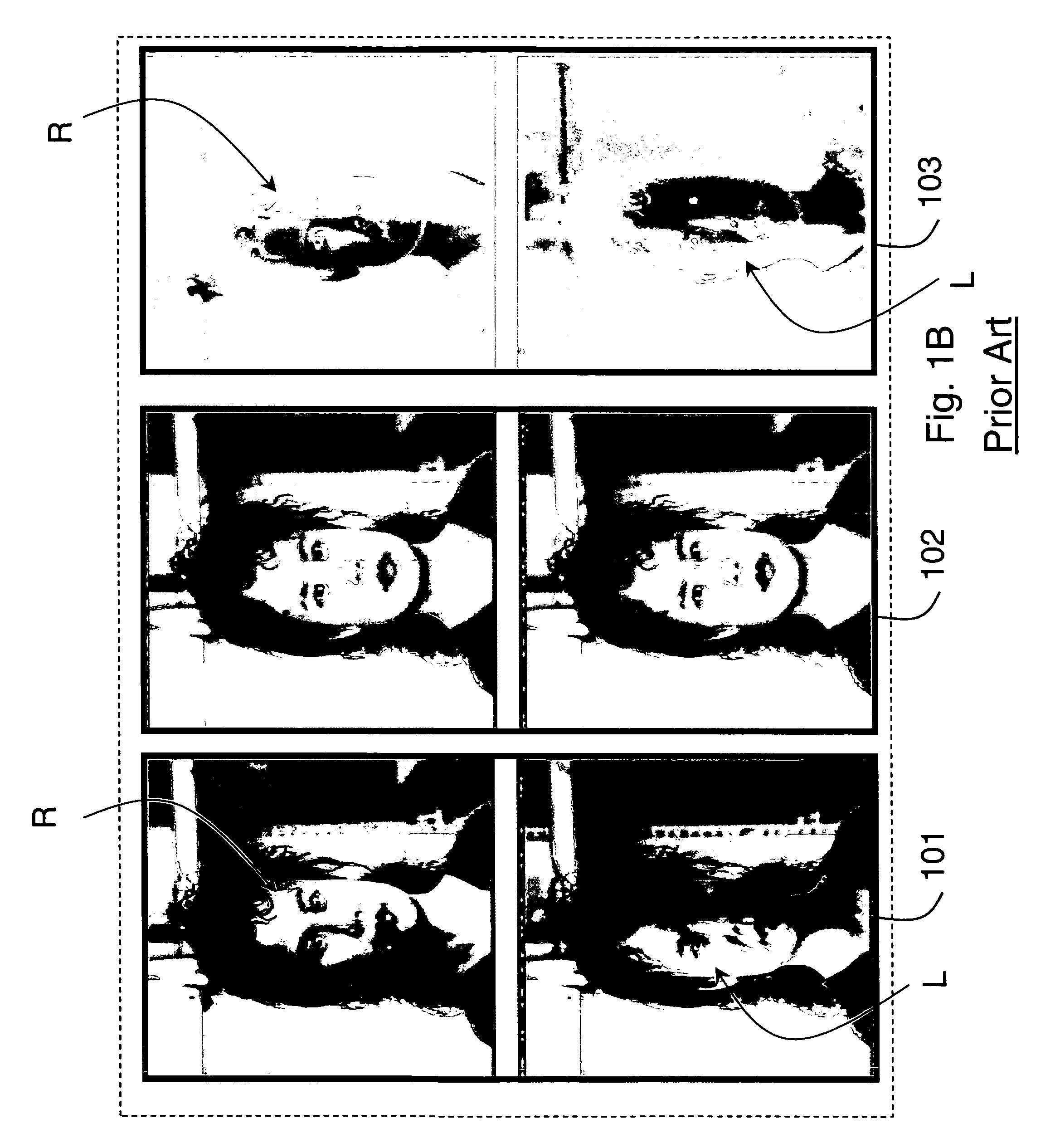Foreground detection using intrinsic images
- Summary
- Abstract
- Description
- Claims
- Application Information
AI Technical Summary
Benefits of technology
Problems solved by technology
Method used
Image
Examples
Embodiment Construction
Intrinsic Background Image
[0040] As shown in FIG. 2, the invention provides a method 200 for detecting foreground regions in images. The foreground regions typically represent moving objects in the scene. A sequence of input images 210 acquired of a scene is processed 300 to generate an intrinsic background image 230. Each of the input images 210 is divided 240 by the intrinsic background image to yield a sequence of intrinsic foreground images 250. In a preferred embodiment, the intrinsic background image is updated as each current image in the sequence 210 is processed.
[0041] The invention characterizes a scene as a product of the foreground and background characteristics, i.e.,
It=B·Ft, (2)
where the background image Bt 230 is relatively static, and the foreground images Ft 250 characterizes dynamic characteristics of the scene, e.g., moving objects. It should be noted that the background image can vary, but over a much longer time-scale as the foreground images. Therefore, a...
PUM
 Login to View More
Login to View More Abstract
Description
Claims
Application Information
 Login to View More
Login to View More - R&D
- Intellectual Property
- Life Sciences
- Materials
- Tech Scout
- Unparalleled Data Quality
- Higher Quality Content
- 60% Fewer Hallucinations
Browse by: Latest US Patents, China's latest patents, Technical Efficacy Thesaurus, Application Domain, Technology Topic, Popular Technical Reports.
© 2025 PatSnap. All rights reserved.Legal|Privacy policy|Modern Slavery Act Transparency Statement|Sitemap|About US| Contact US: help@patsnap.com



